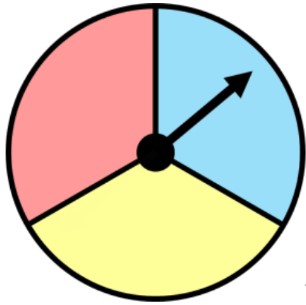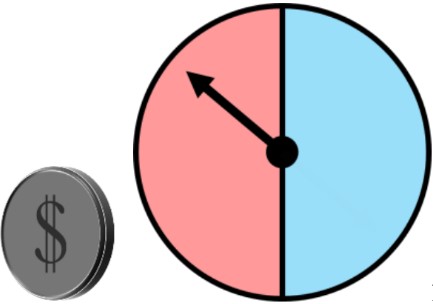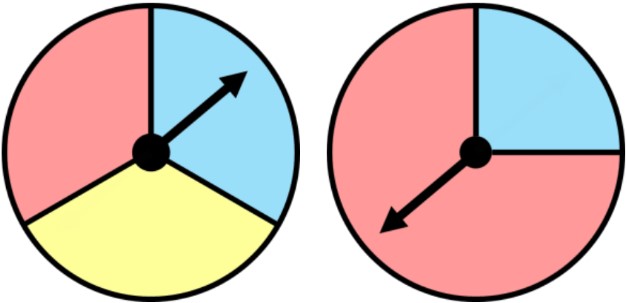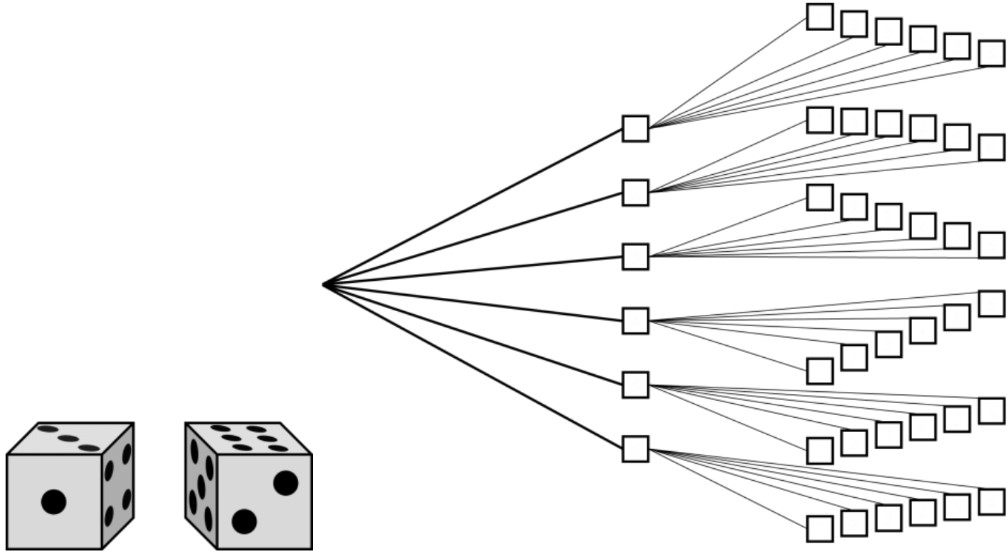Probability for compound events
0/3
Intros
Lessons
- Simple vs. Compound Events in Probability
- Probability Trees
- Strategies for Listing Compound Outcomes
0/9
Examples
Lessons
- Compound event outcomes and probability trees
Fill in the probability tree and list the outcomes for: - Probability of compound events
Find the probability for:- Using a three-part spinner and:

- spinning yellow twice in a row.
- spinning blue once and red once.
- spinning yellow first and then red second.
- Flipping a coin then spinning a two-part spinner and:

- The coin lands on head, and the spinner lands on red.
- The coin lands on tail, and the spinner lands on blue.
- Spinning the arrow on spinner #1 then on spinner #2 and:

- both spinner #1 and #2 land on red.
- one spinner lands on red and the other lands on blue.
- spinner #1 lands on yellow, spinner #2 lands on blue.
- Using a three-part spinner and:
- Probability for compound events: word problem
In a board game, each player needs to roll two dice at the same time during their turn.- How many total outcomes are there?
- There are bonus points for rolling some combinations in this game. What are the probabilities of:
- Rolling two-6s.
- Rolling two of the same number.
- Rolling a sum greater than 8.
- Rolling a sum less than 4.
- Which outcome for bonus points is the most likely for this game? Use the answers from the previous part.
- Using theoretical probability, write the expected results.
- If you roll the dice 36 times, how many times will you roll one 5 and one 6?
- If you roll the dice 360 times, how many times will you roll two-6s?
- If you roll the dice 120 times, how many times will roll two of the same number?



